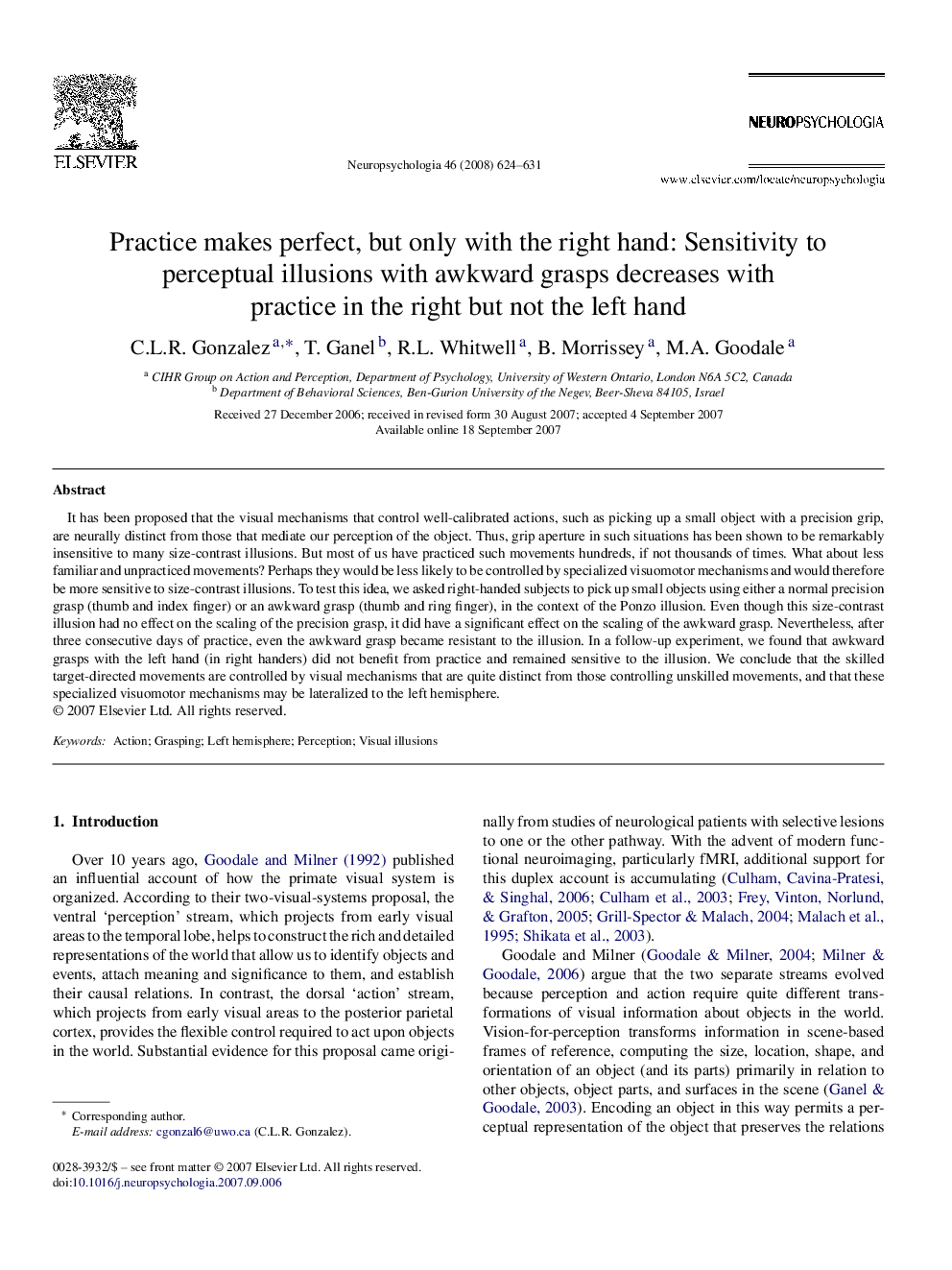| Article ID | Journal | Published Year | Pages | File Type |
|---|---|---|---|---|
| 945292 | Neuropsychologia | 2008 | 8 Pages |
It has been proposed that the visual mechanisms that control well-calibrated actions, such as picking up a small object with a precision grip, are neurally distinct from those that mediate our perception of the object. Thus, grip aperture in such situations has been shown to be remarkably insensitive to many size-contrast illusions. But most of us have practiced such movements hundreds, if not thousands of times. What about less familiar and unpracticed movements? Perhaps they would be less likely to be controlled by specialized visuomotor mechanisms and would therefore be more sensitive to size-contrast illusions. To test this idea, we asked right-handed subjects to pick up small objects using either a normal precision grasp (thumb and index finger) or an awkward grasp (thumb and ring finger), in the context of the Ponzo illusion. Even though this size-contrast illusion had no effect on the scaling of the precision grasp, it did have a significant effect on the scaling of the awkward grasp. Nevertheless, after three consecutive days of practice, even the awkward grasp became resistant to the illusion. In a follow-up experiment, we found that awkward grasps with the left hand (in right handers) did not benefit from practice and remained sensitive to the illusion. We conclude that the skilled target-directed movements are controlled by visual mechanisms that are quite distinct from those controlling unskilled movements, and that these specialized visuomotor mechanisms may be lateralized to the left hemisphere.
